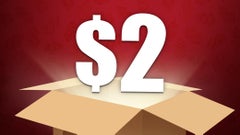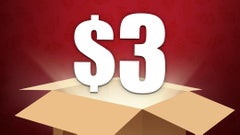Umbrella Rig Patterns & Techniques
Throwing an Umbrella Rig is a phenomenal technique to trigger bites during any time of the year, and while bass usually hold in deeper water in Winter and Summer, Spring and Fall are the best times of the year to catch bass shallow on Umbrella Rigs. During Pre-Spawn and Spring, an Umbrella Rig can be especially effective because it presents a substantial sized meal for opportunistic predators when they are starting to gorge themselves to put on extra weight for the Spawn. With bigger appetites than normal, try using slightly bigger swimbaits than you would during other times of the year and look for staging areas around spawning pockets.
Rods:
Umbrella Rigs can come in dramatically different weights and sizes, but in general, you are going to need a 7’6”-8’ Heavy action rod with a Moderate bend and full handle. The added length and Moderate bend help with making long casts, and when combined with a heavier action, gives you the power to move the rig and set the hook(s), even in deeper water. You can also tuck the full handle under your arm on the retrieve to offset some of the rig’s drag.
Reels:
You’ll want a casting reel with a higher line capacity, something in the 200- to 300-size range. Any gear ratio between 6:1 and 7:1 is ideal and provides a good balance between line pick up and power. From Pre-Spawn through Fall, faster retrieves are generally more effective, while in the Winter months it is best to slow down and dredge the bottom. Pre-Spawn brings fast changing conditions and the fish can change moods rapidly. Anglers should experiment with retrieve speeds.
Line:
Most anglers opt for 20lb-25lb fluorocarbon, and on rare occasions may drop down to 16lb-15lb. Typically, line size doesn’t matter as much with a rig since there are so many components, blades and baits that fish probably aren’t paying much attention to the line. The heavier the rig or the heavier the cover, the heavier the line you are going to want to use. If you can get away with straight braid, do it! Lastly, don’t forget to be generous with line conditioner as there is nothing worse than watching your expensive rig and components sail off into the sunrise on a bad cast.
Modifications & Rigging
Any jighead with a 45-degree line tie is a great place to start, and rarely do you need heavier than 1/8oz jigheads. You can fish a 5-wire bladed rig anywhere from dirt shallow to 15ft of water using 20lb fluorocarbon with just three 1/8oz jigheads and two dummy heads. If you use heavier heads or big swimbaits, you’re really going to wear yourself out after a day or two of throwing it. That being said, upsizing to slightly larger swimbaits in Spring tends to produce more bites and bigger bites than other times of the year. Also, Umbrella Rigs with blades are almost always a good idea unless the water is really clear.
Tips & Tricks
An o-ring behind the head of an Umbrella Rig makes it easy to collapse and store the rig when you’re not fishing it, and it won’t affect performance. Some anglers also like to add a power handle to their reel for added leverage. Always remember to check your State’s regulations on how many hooks you can have per Umbrella Rig, you may need to throw on a couple of dummy heads in order to comply. Lastly, make sure there is a little wind before you throw a rig unless you see fish actively schooling.
Colors:
Shad imitations rule the day since you are basically imitating a school of fish. Shads, translucent shads or really any baitfish imitating color will generally work well. If the water is dirty, dark or stained, utilizing chartreuse-colored paddle tails can help fish to locate your rig.


















































































































































































